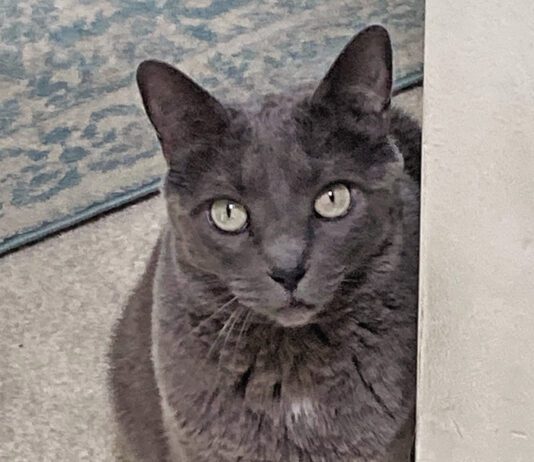Short Takes: November 2015
Cats have long endured the reputation for being fussy eaters. Weve known for a decade that, with some exceptions, most cats lack the taste receptor gene for sweets. Now a study suggests that they may have a legitimate reason for avoiding another flavor.
Is Your Cat Squinting and Head Shy?
If your cat squints or his eyes are increasingly tearing, take a closer look. Does he have a red eye with a cloudy blue tint to the surface and a dilated pupil? These could be signs of glaucoma that require immediate treatment to avoid significant or complete loss of vision. Because of the subtle nature of the symptoms, some cats dont have a veterinary examination until substantial damage has occurred.
8 Simple Steps to Stopping Pica
Prevent access to tempting items by hiding them. Even if your cat doesnt have pica, its a wise idea to keep items like yarn, rubber bands, and tinsel and Venetian blind cords out of reach. Instead, offer a variety of safer toys.
Short Takes: October 2015
Students and volunteer citizen scientists, using motion-sensitive cameras at more than 2,100 sites in six Eastern states and the city of Raleigh, N.C., collected millions of images of domestic cats roaming outdoors at night. The result of North Carolina States exhaustive analysis of the images showed that the cats avoided parks and protected areas frequented by coyotes. Instead, they remained in residential areas, small urban forests and city trails.
Maybe Home Environment Isn’t To Blame
Research on pica in cats has found that the behavior does not appear to be the result of a suboptimal environment, early weaning or increased appetite. A report on the Characterization of pica and chewing behaviors in privately owned cats: a case-control study, published in the Journal of Feline Medicine and Surgery and based on research at the University of Montreal Veterinary Teaching Hospital, sought answers about pica via owner questionnaires.
In The News: October 2015
Some signs of stress in cats are obvious - loss of appetite, increased urine marking, hair loss from over grooming. Other signs may be more subtle and easy to overlook, according to a study by the Autonomous University of Barcelona.
When Rough Play Gets Out of Hand
Your indoor cat needs and deserves daily play sessions to keep him physically and mentally fit. Play can help prevent him from engaging in destructive behaviors like shredding the sofa out of boredom or becoming obese from overeating to pass the time.
Why Cats Hate Veterinary Visits
More than half of cat owners - 58 percent - report that their cat hates going to the veterinarian, according to a study by Bayer Veterinary Care. They hide, hiss and howl for one simple reason: Theyre afraid. Through no fault of their own, cats native instinct to stay safe by avoiding the unfamiliar doesnt serve them in the crate, the car and the clinic.Cats may be unfamiliar with loud noises, such as barking dogs or vocalizing cats, strange odors in the air and on the floor of the clinic, and that translates into fear, says Leni K. Kaplan, MS, DVM, a lecturer in the Community Practice Service at Cornell University College of Veterinary Medicine. Cats are also routine-oriented, and going to the vet, which most likely involves traveling in a car, is not part of their regular routine.
So You Want to Add One More Cat?
If youre debating whether to bring home a new cat, you may stop and wonder: Do I dare add one more? We love animals, but the point comes when we should stop adding them to our households and hearts, whether due to our current pet population, expense, time involved in caring for multiple pets or this basic point about feline nature:Cats are mostly happy as only cats, says animal behaviorist Katherine A. Houpt, VMD, Ph.D., emeritus professor at Cornell University College of Veterinary Medicine.It may seem that a second cat could provide companionship for your lone feline or that a new kitten could enliven an old cat, but Dr. Houpt cautions, If you have a cat, there are lots of things you can do to improve the quality of his life - but getting another cat is not one of them.
Doing The Math: 1 Cat + 2 Dogs = Harmony
When it comes to household harmony, animal behaviorist Katherine A. Houpt, VMD, Ph.D., emeritus professor at Cornell, offers these rules of thumb: One cat per household works best.
Studies Suggest Both Biology and Mental Health Figure in Hoarding
You want a fifth or 10th cat, so does that make you an animal hoarder? Actually, hoarding is not related to the absolute number of animals, despite the common perception, says Randall Lockwood, Ph.D., the ASPCAs senior vice president of forensic sciences and anti-cruelty projects. Someone with 50 animals may provide perfectly adequate daily care and veterinary care. Theirs is not an animal cruelty case.
Content, Agitated, Fearful, Aggressive?
Scientists estimate that cats have lived with us for at least 9,000 years, and surveys show that many of the 45 million households in the U.S. today consider their 96 million cats bona fide members of the family. Yet after all these years, how well do we really understand cats?It turns out not that well, says Katherine Houpt, VMD, Ph.D., animal behaviorist and professor emeritus at Cornell University College of Veterinary Medicine. Cats body language is daunting for many of us to interpret, particularly because of their anatomy.














